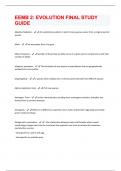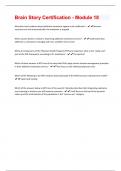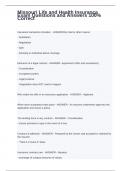Exam (elaborations)
EEMB 2: EVOLUTION FINAL STUDY GUIDE QUESTIONS & ANSWERS RATED 100% CORRECT!!
- Module
- Institution
Adaptive Radiation - An evolutionary pattern in which many species evolve from a single ancestral species Allele - An alternative form of a gene. Allele Frequency - Number of times that an allele occurs in a gene pool in comparison to the total number of alleles allopatric speciation - The for...
[Show more]












